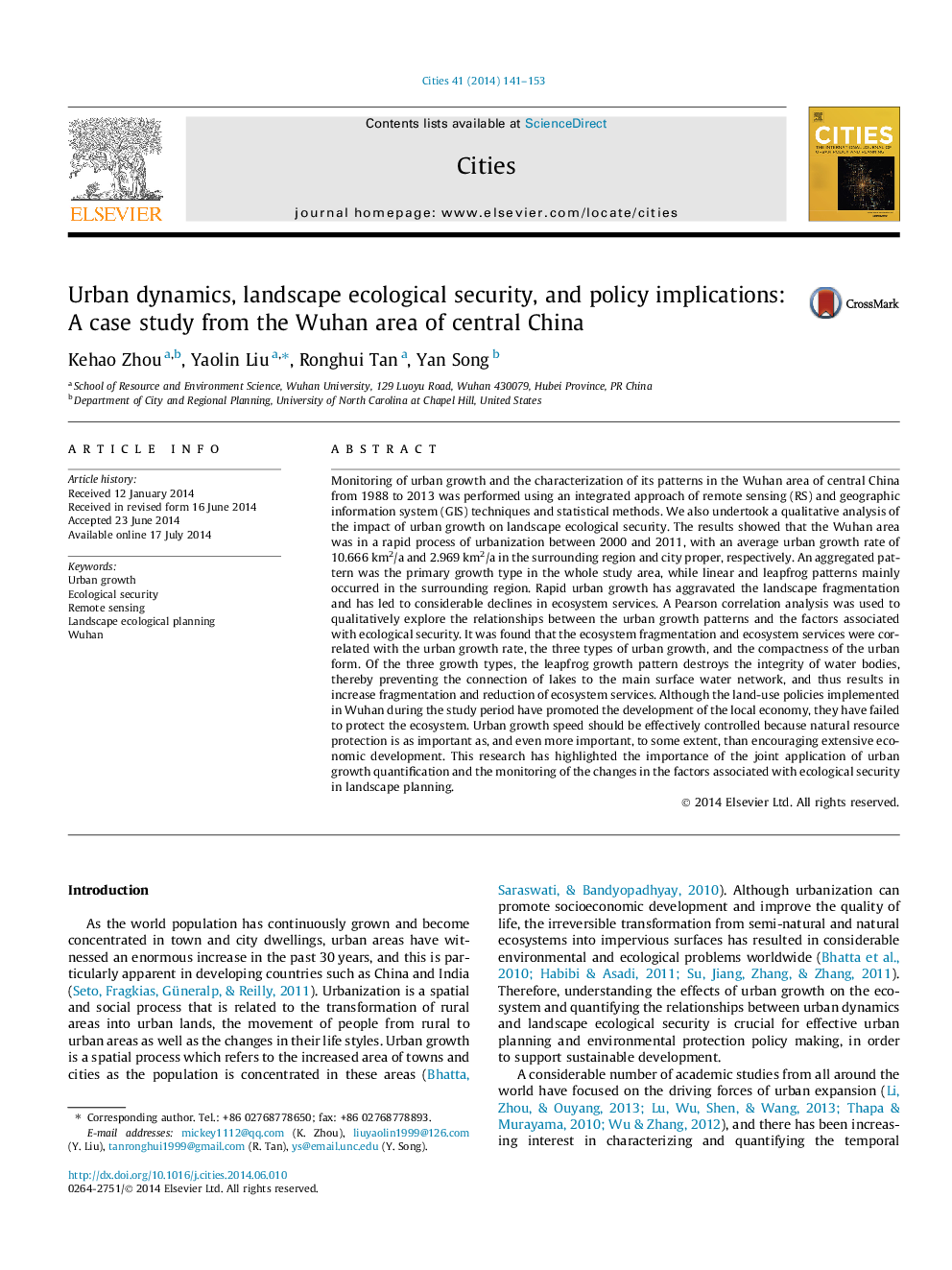| Article ID | Journal | Published Year | Pages | File Type |
|---|---|---|---|---|
| 10489868 | Cities | 2014 | 13 Pages |
Abstract
Monitoring of urban growth and the characterization of its patterns in the Wuhan area of central China from 1988 to 2013 was performed using an integrated approach of remote sensing (RS) and geographic information system (GIS) techniques and statistical methods. We also undertook a qualitative analysis of the impact of urban growth on landscape ecological security. The results showed that the Wuhan area was in a rapid process of urbanization between 2000 and 2011, with an average urban growth rate of 10.666Â km2/a and 2.969Â km2/a in the surrounding region and city proper, respectively. An aggregated pattern was the primary growth type in the whole study area, while linear and leapfrog patterns mainly occurred in the surrounding region. Rapid urban growth has aggravated the landscape fragmentation and has led to considerable declines in ecosystem services. A Pearson correlation analysis was used to qualitatively explore the relationships between the urban growth patterns and the factors associated with ecological security. It was found that the ecosystem fragmentation and ecosystem services were correlated with the urban growth rate, the three types of urban growth, and the compactness of the urban form. Of the three growth types, the leapfrog growth pattern destroys the integrity of water bodies, thereby preventing the connection of lakes to the main surface water network, and thus results in increase fragmentation and reduction of ecosystem services. Although the land-use policies implemented in Wuhan during the study period have promoted the development of the local economy, they have failed to protect the ecosystem. Urban growth speed should be effectively controlled because natural resource protection is as important as, and even more important, to some extent, than encouraging extensive economic development. This research has highlighted the importance of the joint application of urban growth quantification and the monitoring of the changes in the factors associated with ecological security in landscape planning.
Related Topics
Social Sciences and Humanities
Business, Management and Accounting
Tourism, Leisure and Hospitality Management
Authors
Kehao Zhou, Yaolin Liu, Ronghui Tan, Yan Song,
